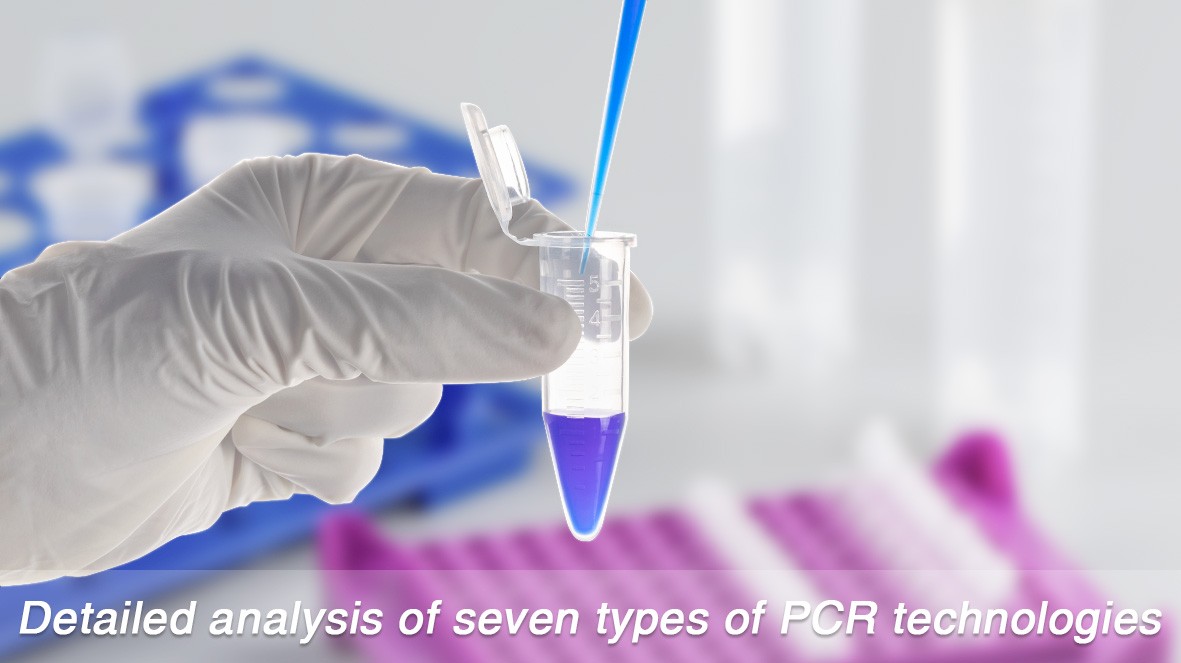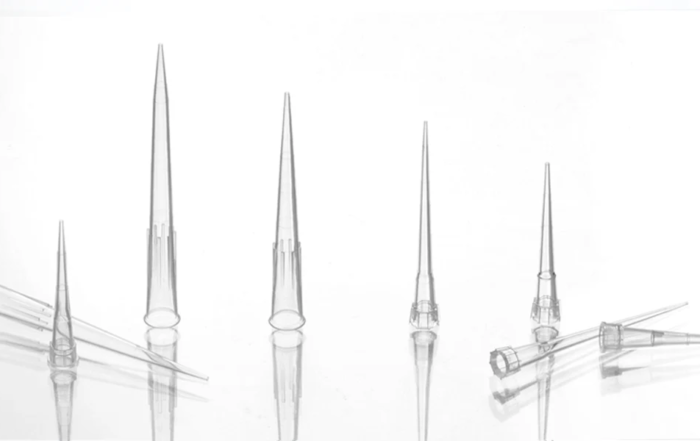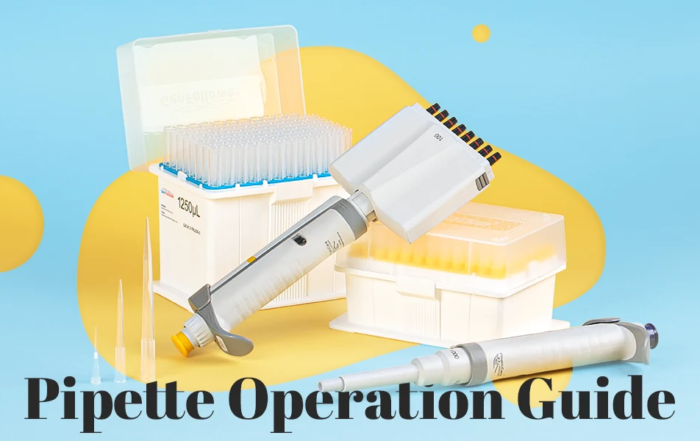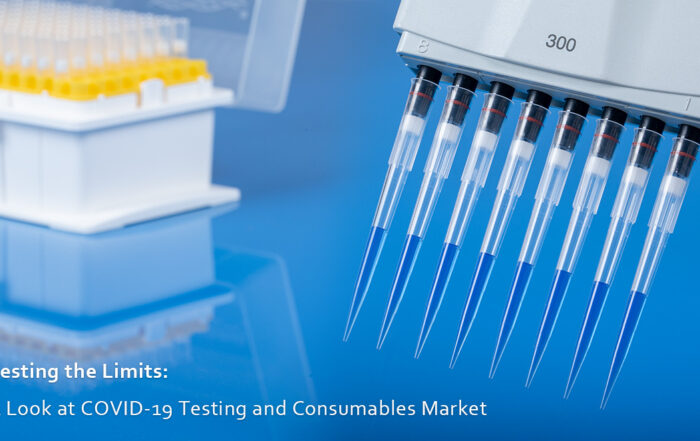Table of Content
The emergence of the COVID-19 has promoted a leap in molecular diagnostics, and molecular diagnostic products have also sprung up.
Today we are here to briefly summarize which PCR methods are used in these products. There are 7 kinds of PCR technology divided in different theory.
PCR:Polymerase Chain Reaction
As one of the most commonly used PCR technologies, Polymerase Chain Reaction is now widely used in the field of biomedicine. Actually, it is widely used to rapidly make millions to billions of copies of a specific DNA sample, which allows scientists to amplify the very small DNA sample to study. The experimental principle of PCR is as below: First, the DNA will become single-stranded when it is denatured at a high temperature of 95°C in vitro. Then at low temperature (usually around 60°C), the primer and the single strand are combined according to the Complementary Base Pairing Rules. Then adjust the temperature to the optimum reaction temperature for DNA polymerase (about 72°C), and the DNA polymerase will synthesize the complementary strands along the direction from phosphoric acid to 5-carbon sugars (5′-3′). The PCR machine based on polymerase is actually a temperature control device, which can well control the denaturation temperature, annealing temperature, and elongation temperature.
RT-PCR:reverse transcription PCR
RT-PCR is a widely used technology combining reverse transcription of RNA and polymerase chain reaction (PCR). During the RT-PCR process, an RNA strand is reverse transcribed into the complementary single strand of DNA under the action of reverse transcriptase, which is then used as a template for DNA amplification by PCR. Usually, this technology can be used to detect the level of gene expression in cells, the content of RNA viruses in cells, and the direct cloning of cDNA sequences of specific genes.
LAMP:loop-mediated isothermal amplification
LAMP is an isothermal amplification of nucleic acids technique to detect certain disease, and a low-cost alternative compare to common PCR. Usually, LAMP mainly uses 4 kinds of primers to amplify six different regions of the target gene. 60-65°C is the intermediate temperature for double-stranded DNA annealing and extension, and DNA is in a dynamic equilibrium state around 65°C. The entire reaction relies on the DNA strand-displacing DNA polymerase. This kind of strand-displacing DNA polymerase initiates synthesis and 2 specially designed primers form “loop” structures to facilitate subsequent rounds of amplification through extension on the loops and additional annealing of primers, so that the target gene can be efficiently amplified in a large amount within a short time.
RPA:Recombinase Polymerase Amplification
RPA technology mainly relies on three enzymes: recombinase that can bind single-stranded nucleic acid (oligonucleotide primer), single-stranded DNA binding protein (SSB) and strand-displacement DNA polymerase. The mixture of these three enzymes is also active at room temperature, and the optimal reaction temperature is around 37°C. The protein-DNA complex formed by the combination of recombinase and primer can search for homologous sequences in double-stranded DNA. Once the primers locate the homologous sequence, the strand exchange reaction will occur and DNA synthesis will start, exponentially amplifying dans the target region on the template. The replaced DNA strand binds to the SSB to prevent further replacement.
SAT:Simultaneous Amplificationand Testing
Simultaneous Amplification and Testing is a new nucleic acid detection technology developed based on TMA, a constant temperature amplification technology. Also, it is a patented technology independently developed by domestic enterprises as well. It uses the principle of reverse transcription-transcription to achieve RNA amplification. Unlike conventional PCR, the template of this method is RNA, and the product is also RNA. As a mature detection technology, SAT has been successfully applied to various clinical tests, such as mycobacterium tuberculosis, mycoplasma pneumoniae, enterovirus and influenza A virus.
dPCR:Digital PCR
dPCR is an absolute quantification technology of nucleic acid molecules. Compared with qPCR, digital PCR allows you to directly count the number of DNA molecules, which is an absolute quantification of the starting sample. According to the form, there are droplet digital PCR (ddPCR) and chip digital PCR (cdPCR).
ddPCR: Droplet Digital PCR
The droplet digital PCR system performs droplet processing on the sample before the traditional PCR amplification. It divides the reaction system containing nucleic acid molecules into thousands of nanoliter-sized droplets, each of which either contains no nucleic acid target molecules to be detected or contains one or more.
Compared with traditional PCR, ddPCR determines the absolute number of target molecules as low as a single copy. In short, the droplet technology makes digital PCR lower cost and more practical.
cdPCR: Chip-based digital PCR
This technology uses silicon wafers as a solid chip carrier, and also divides the sample liquid into nanoliter-sized particles of the same size, and performs digital PCR reactions in the reaction wells.
With the advancement of science and technology, PCR technology has been continuously innovated. We believe that more new technologies will appear in the far future. Okay, that’s all of the content of this article, we hope this can be helpful to you. Thank you!
The Ultimate Guide to Pipette Tips
Welcome to the Ultimate Guide to Pipette Tips—your comprehensive resource for everything you need to know about these indispensable laboratory tools! Whether you're new to the lab or a seasoned scientist, understanding pipette tips [...]
Beginner’s Guide: How to Use a Pipette Correctly
Beginner's Guide: How to Use a Pipette Correctly Whether you're preparing reagents or conducting various experiments, pipettes are indispensable in the lab. However, many beginners often feel confused when using them, sometimes [...]
Testing the Limits: A Look at COVID-19 Testing and Consumables Market
The COVID-19 pandemic has drastically impacted every aspect of our lives, from the way we socialize and work to how we travel and shop. At the center of the health crisis is the [...]



